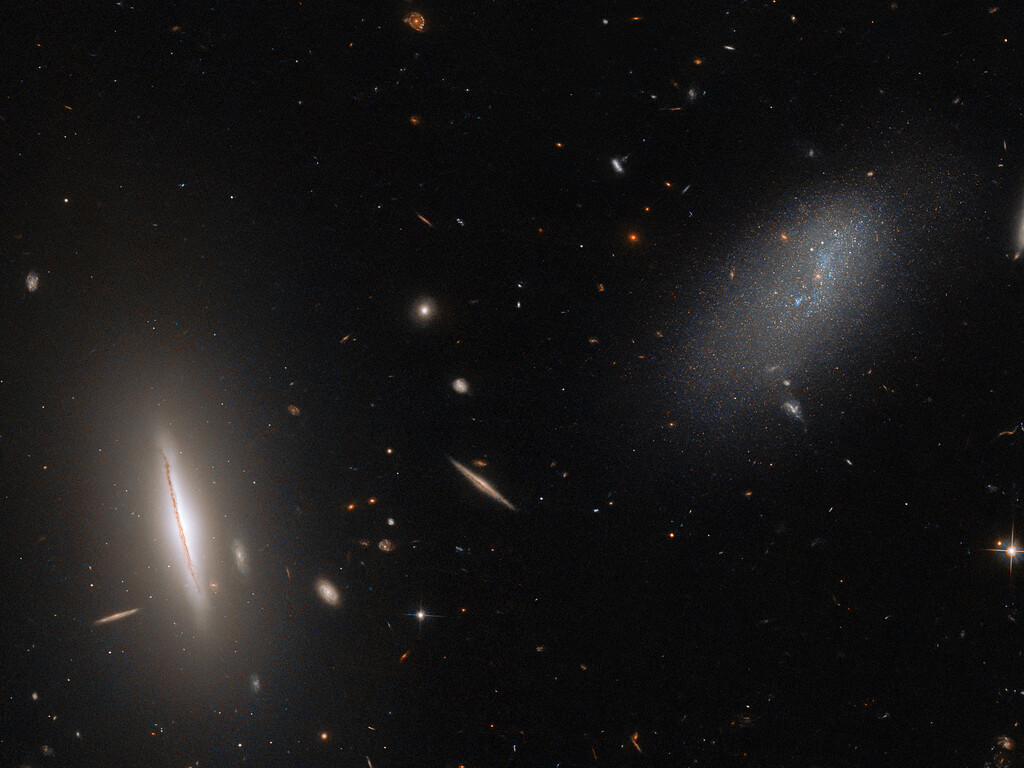Hubble visits a galactic neighbour around 30 million light-years away

This celestial landscape captured by the NASA/ESA Hubble Space Telescope shows LEDA 48062, a faint, sparse, amorphous galaxy on the right side of the image. The galaxy is accompanied by a more sharply defined neighbour on the left, the large, disc-like lenticular galaxy UGC 8603.
The background is black and mostly empty, with a few distant galaxies scattered in it. A few foreground stars are also visible in this Hubble image shared by the European Space Agency (ESA).
LEDA 48062 is only around 30 million light-years from the Milky Way, in the constellation Perseus. It was included in the Every Known Nearby Galaxy campaign designed to observe every known galaxy within 10 megaparsecs (around 33 million light-years) of the Milky Way. By learning more about our galactic neighbours, astronomers can determine what types of stars are in various galaxies and also map out the local structure of the Universe.
This new image from Hubble features the galaxy LEDA 48062 in the constellation Perseus. LEDA 48062 is the faint, amorphous galaxy on the right, and it is accompanied by the disc-like galaxy UGC 8603 on the left. Read more: https://t.co/TxGRtiYkhT📷: ESA/Hubble & NASA, R. Tully pic.twitter.com/5RocVFlsIT
— HUBBLE (@HUBBLE_space) January 9, 2023
Wondering why the four sharp points around the stars in Hubble images?
Well, these are called diffraction spikes, which are caused by the starlight diffracting around the support structures inside reflecting telescopes like Hubble. The four spikes are due to the four thin vanes supporting Hubble's secondary mirror and are only visible for bright objects like stars where a lot of light is concentrated on one spot. Darker, more spread-out objects like the galaxies LEDA 48062 and UGC 8603 do not have visible diffraction spikes.
The Hubble Space Telescope has been exploring the universe since its launch in 1990. In its 32+ years of operation, the telescope has made over 1.5 million observations and has revolutionized our understanding of the cosmos.










